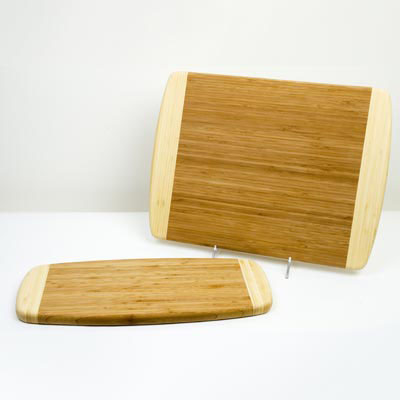“A clean hand is better than a dirty glove,” say the Aussies.
For years – decades – I’ve heard from food safety types at food service that they know gloves don’t do much during food prep, but the public complains if workers aren’t wearing their gloves; the gloves stay.
Which comes first, food service mindlessly blaming public perception, or taking responsibility and  influencing public opinion based on evidence?
influencing public opinion based on evidence?
Aliza Green, a Philadelphia chef-consultant and author, had a great take on the glove-or-no-glove issue in the Washington Post a couple of days ago. Excerpts below:
A food preparation worker washes her hands and puts on gloves. She needs to make chicken salad. She starts by seasoning the poultry pieces, rubbing them with salt, pepper and herbs, and then spreads them out in a pan for steaming. Wearing the same pair of gloves, she dices celery and onions. She makes the dressing. Finally, she cuts up the cooked chicken, mixes the salad and packs it away, ready to sell.
A line cook with gloves on his freshly washed hands gets an order for a hamburger, grabs the raw patty from the refrigerator and slaps it on the grill. Once the burger is cooked, he picks up a bun and plates up the burger with lettuce, tomato and fries — all without pulling on a new pair.
In my more than 35 years in the food business as a chef and consultant, I have seen a lot of scary things. And those common scenes are among them.
I’ve been in and out of the kitchens in hotels and independent restaurants, of caterers and commissaries. These days, food handlers are expected to wear gloves especially when they’re working in public view. However, those gloves are good only if the hands they are covering are clean. To my mind, gloves are problematic; people equate them with food safety.
According to a 2007 study in the Journal of Food Protection, “Hand washing and glove use were also related to each other — hand washing was less likely to occur with activities in which gloves were worn.” A 2010 study in the same journal concludes, “Glove use can create a false sense of security, resulting in more high-risk behaviors that can lead to cross-contamination when employees are not adequately trained.” Also in the report: “Occlusion of the skin during long-term glove use in food operations creates the warm, moist conditions necessary for microbial proliferation and can increase pathogen transfer onto foods through leaks or exposed skin or during glove removal.” In other words, just wearing gloves can create dangerous conditions.
With the use of food-safe gloves of various materials, we have created a new set of problems as well: the huge waste of resources in producing and disposing of billions of pairs every year. It’s money that could be spent on kitchen improvements such as providing automatic or foot pedal-operated hand sinks and enough time for workers to wash their hands a reasonable number of times per day. People may be allergic to gloves, especially those made from latex, while potentially carcinogenic and toxic materials are used in making certain types of gloves.
Although there are some very good arguments to be made for wearing gloves in certain circumstances, such as when mixing a batch of meatballs and when workers have a wound on their hands, we should reevaluate the automatic and ubiquitous usage.
“People put those darn gloves on and they think they’re protected,” says Denise Korniewicz, dean of the college of nursing at the University of North Dakota and an expert on the efficacy of gloves.  “The best way to prevent the transmission of bacteria, virus or other bug is to wash hands thoroughly, adhering to the protocols that we know work. When evaluating food safety, it’s not the gloves I observe; rather it’s what workers are doing with their hands, like using the phone or wiping their nose.”
“The best way to prevent the transmission of bacteria, virus or other bug is to wash hands thoroughly, adhering to the protocols that we know work. When evaluating food safety, it’s not the gloves I observe; rather it’s what workers are doing with their hands, like using the phone or wiping their nose.”
Studies done in the United Kingdom and published in 2010 concluded that gloved hands can contribute as much, if not more, bacteria to foods than bare hands. That same year, an American study in a fast-food restaurant found more than twice as much coliform bacteria in tortilla samples handled by gloved workers compared with bare hands.
“We may need to make sure workers wash by putting cameras in the sink area of restrooms,” Korniewicz says. “All too often, they haven’t been provided with convenient, clean hand sinks with plenty of soap and paper towels. If enough time and proper materials for washing were provided, we could all have more confidence in the safety of prepared food, reducing our dependence on gloves.”
Using gloves in the kitchen dates back further than you might realize. In Rome about 2,500 years ago, “the wealthier classes kept slave bakers; very grand people made these slaves wear gloves to knead the dough and masks to protect it from perspiration and the breath of the common person,” according to “A History of Food,” by Maguelonne Toussaint-Samat. The first use of rubber gloves was in 1883. Eleven years later, they were included in the standard surgical procedure at Johns Hopkins Hospital. An Australian company, Ansell, created the first disposable latex medical gloves in 1964 by adapting the technique they use for the manufacture of condoms.
Jared Johnson, executive chef for the Heathland Hospitality Group in Philadelphia, told me “the average person is more aware of cross-contamination and food-borne illnesses than 10 years ago. If my crew wears gloves while serving, it puts the customer at ease and we can focus on the food and service. However, I’m not a fan of wearing gloves while chopping, because glove pieces could end up in the food.”
Wearing gloves is meant to protect the consumer from dangerous diseases that can be transmitted mostly through ready-to-eat foods. Culprits include the viruses hepatitis A and the highly contagious norovirus, responsible for about 50 percent of all outbreaks of food-related illness and transmitted through foods such as leafy greens, fresh fruits and shellfish. Bacteria that cause serious food-borne illnesses include E. coli, found in cattle and in infected humans; salmonella typhi, which lives only in humans; shigella, which is transmitted mostly through eating or drinking contaminated food or water; and listeria, which is found in unpasteurized dairy products and ready-to-eat foods such as deli meats and soft cheeses.
Regulations for glove use vary greatly within and outside the United States. FDA recommends handwashing before making food and putting on gloves to make food. In New York state, ready-to-eat food must be prepared and served without bare-hand contact by wearing gloves or, alternatively, using tongs, forks and spoons, deli paper, wax paper, napkins or spatulas. The Arkansas Department of Health has a different viewpoint: “Glove usage has not been proven to lower the incidence of food-borne illnesses. Gloves become just as dirty as the bare hand but are not as likely to be replaced as often as the hands are washed.”
Note that liquid hand sanitizers are to be used after handwashing, not as a substitute for it, and that hands must then be allowed to air-dry after using them and before working with food.
Regulations and practices must be workable, however. I recently had to take a ServeSafe course created by the National Restaurant Association. Food managers working in Philadelphia are required to take it and to pass the certification exam. My classmates included a young woman starting a specialty cookie business, the manager of a senior services facility in a church, the owner of a drive-in movie theater that serves food and the owner of a neighborhood pizzeria.
I found the information overly detailed, highly impractical and lacking in simple basic principles based on common sense. In one case study in the course book, a food worker was supposed to have washed his hands 12 times in the time between breakfast and lunch service. That would never happen in any kitchen I’ve ever seen.
To improve food safety in real-life conditions, the CDC recommends revising food preparation methods to reduce the number of handwashings needed, for example by decreasing the number of times a worker has to handle raw meat when making a sandwich.

 However, Katie did confess she now misses my homemade-from-scratch buckwheat pancakes with berries.
However, Katie did confess she now misses my homemade-from-scratch buckwheat pancakes with berries. .jpg)
.jpg) Third-party audits are an incomplete form of verification that provide a limited view of a producer’s facilities and documentation but do not effectively reduce risk. …At some point, folks will figure out that all these outbreaks of foodborne illness – like Salmonella in peanut butter – happened at places that passed so-called independent audits.
Third-party audits are an incomplete form of verification that provide a limited view of a producer’s facilities and documentation but do not effectively reduce risk. …At some point, folks will figure out that all these outbreaks of foodborne illness – like Salmonella in peanut butter – happened at places that passed so-called independent audits.(1).jpg) Kris Charles, a spokeswoman for Kellogg, said,
Kris Charles, a spokeswoman for Kellogg, said, However, whenever I use a wooden or plastic cutting board, I pay close attention to the number of grooves I’ve placed in the board from years of chopping and cutting with my heavy hand. It is difficult to effectively clean and sanitize such a board and bacteria could be left behind that tend to hide in these cuts.
However, whenever I use a wooden or plastic cutting board, I pay close attention to the number of grooves I’ve placed in the board from years of chopping and cutting with my heavy hand. It is difficult to effectively clean and sanitize such a board and bacteria could be left behind that tend to hide in these cuts.